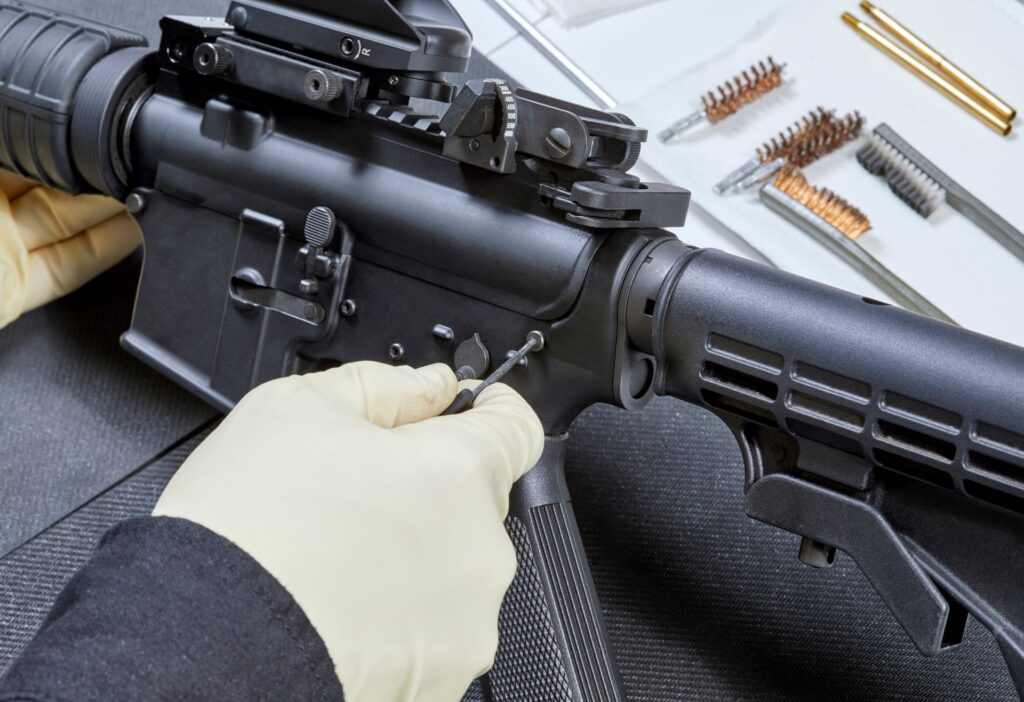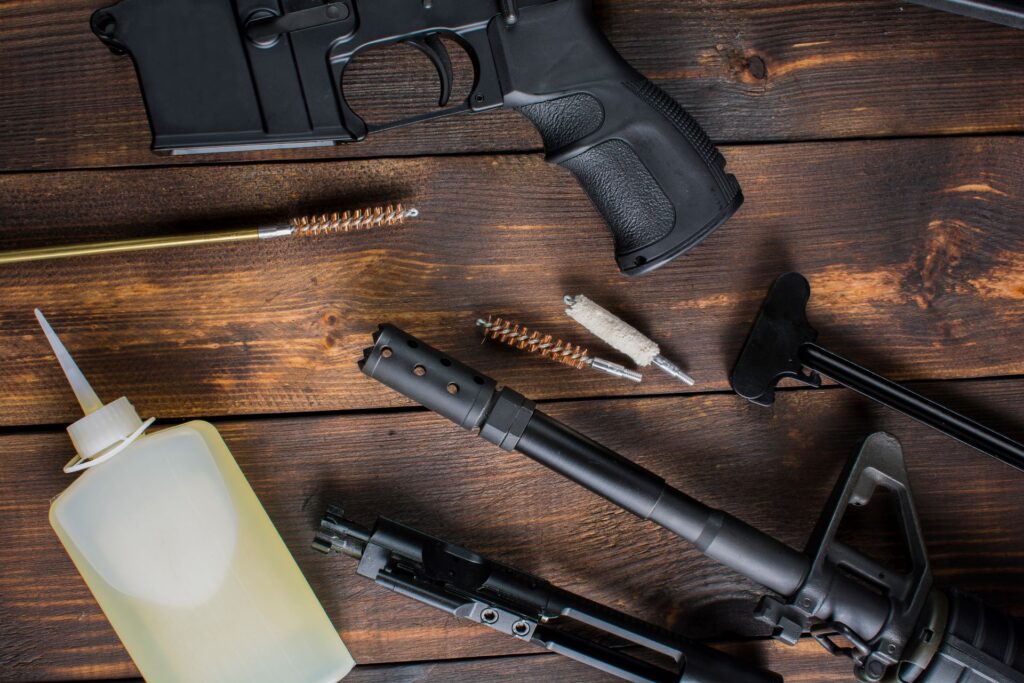When stacked up against other firearms, owning an AR-15 is an investment in precision engineering and versatility, making it a favorite among enthusiasts and professionals alike. Maintaining your AR-15 isn’t just about following steps; it’s about understanding the relationship between each part and its impact on overall performance. Here’s a detailed guide to keeping your AR-15 in prime condition, complete with insights into the ‘why’ and ‘when’ of each maintenance step.
AR-15 Maintenance
The AR-15 platform is renowned for its modular design and ease of customization, which also makes maintenance straightforward if you understand the function of each component. Regular maintenance ensures optimal performance, prevents malfunctions, and extends the life of your firearm. Whether you’re a competitive shooter, a hunter, or use your AR-15 for defense, the care you invest in your firearm translates directly to its reliability and accuracy in the field. Here’s a guide to the different levels of maintenance you should at least be looking into. These steps and their associated timeframes (aside from the Post-Range Routine) aren’t the end-all, be-all, but they’re a step in the right direction.
Before we get started, here’s a concise list of essential tools for maintaining an AR-15:
- Cleaning Kit
- Lubricant/Oil
- Grease
- Solvent
- AR-15 Armorer’s Wrench
- Screwdriver Set
- Punch Set
- Small Hammer
- Needle-nose Pliers
- Cleaning Rags or Cloths

Basic Cleaning: Post-Range Routine
- Step 1: Ensuring Safety – Always start by verifying the firearm is completely unloaded. This fundamental safety step prevents accidents and is the first principle of responsible gun ownership.
- Step 2: Field Stripping – Disassemble your AR-15 to access the main components: the upper receiver, bolt carrier group, and barrel. This allows for thorough cleaning and is a perfect time to inspect these parts for wear or damage.
- Step 3: Barrel and Chamber Cleaning – The barrel and chamber are critical for accuracy and safety. Use a bore brush and solvent to remove residue and buildup from projectiles and combustion. A clean barrel ensures unobstructed bullet travel and maintains accuracy.
- Step 4: Bolt Carrier Group Maintenance – This group is the heart of your AR-15’s operation. Clean each part thoroughly to remove carbon build-up, especially around the gas ports and bolt carrier rails, which are critical for reliable cycling.
- Step 5: Reassembly and Lubrication – After cleaning, lubricate the moving parts to reduce friction and wear. Proper reassembly and lubrication ensure smooth operation and protect against premature wear and corrosion.

Intermediate Maintenance: Monthly Checks
- Step 1: Gas System Inspection – The gas system is vital for the auto-loading feature of the AR-15. Check the gas block and tube for obstructions or carbon build-up, which can affect the rifle’s cycling and overall function.
- Step 2: Buffer System Check – The buffer and spring absorb recoil and help in cycling the action. Regular checks can prevent failures due to wear or damage, ensuring consistent performance.
- Step 3: Trigger Assembly Care – A clean and well-maintained trigger ensures reliable firing. Monthly inspections help identify potential issues before they affect performance.
Advanced Maintenance: Bi-Annual Tasks
- Part Replacement – Inspect and replace worn components like springs and pins. These parts are under constant stress and, if worn, can affect the reliability of your firearm.
- Deep Clean the Lower Receiver – A thorough cleaning of the lower receiver and its components ensures that grime and debris do not impede the firearm’s functionality.
- When you’re done: Test Fire and Safety Verification – After extensive maintenance, test firing in a controlled environment is crucial to ensure that all components function correctly together. Safety checks are imperative to confirm that the firearm operates safely and as expected.

Additional Maintenance Insights
- Why Storage Matters: Proper storage prevents unnecessary wear and tear from environmental factors. A cool, dry place keeps rust and corrosion at bay.
- Choosing the Right Lubricants: High-quality lubricants can make a significant difference in protection and performance. They should lubricate effectively without attracting too much debris.
- Tools for the Job: Investing in a quality cleaning kit and AR-specific tools can simplify maintenance tasks and ensure that you are equipped to handle most issues.
Effective maintenance of your AR-15 is about more than just cleaning; it’s about understanding each part’s role in the firearm’s functionality and performance. You wouldn’t want that custom-built rifle you spent your hard-earned time and money on to become a loss of investment due to poor maintenance habits. Regular, thoughtful care ensures your AR-15 will perform reliably when you need it most, whether for sport, protection, or competition. By committing to a comprehensive maintenance routine, you ensure that your AR-15 will remain a dependable tool for years to come.
Lucas Applicator Bottle – 1 oz.
Lucas Applicator Bottle - 1 oz.
Birchwood Casey single Hook Steel Target Hanger Ground Stake –
Birchwood Casey single Hook Steel Target Hanger Ground Stake - White


